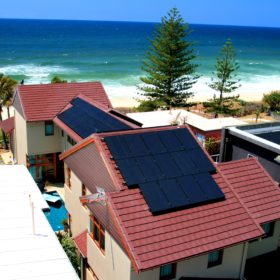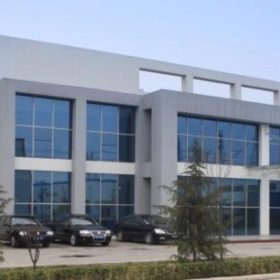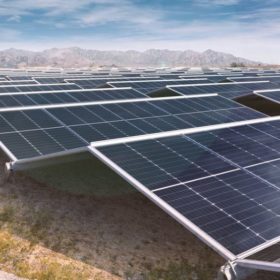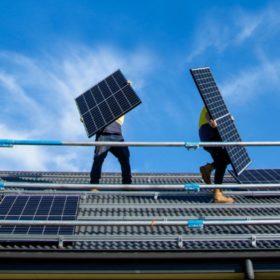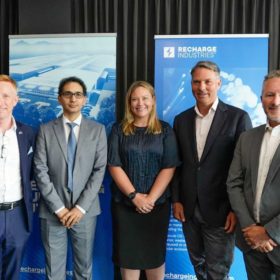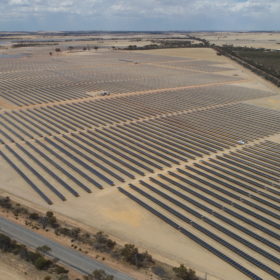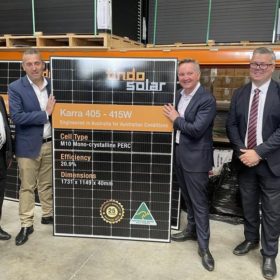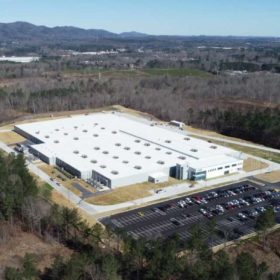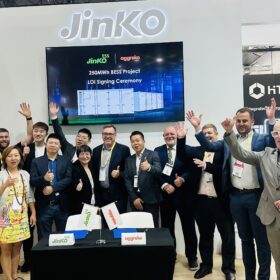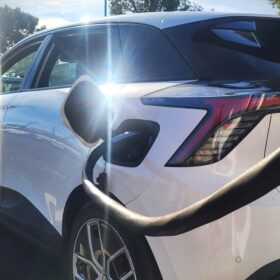QCells unveils updated module for rooftop market
Hanwha Qcells has launched the latest generation of its Q.MAXX solar panel series for the Australian residential market, stating the power class has been increased by up to 15 Wp compared to previous iterations.
JA Solar to build new vertically integrated solar factory in China
JA Solar says it will build a new manufacturing facility in Inner Mongolia, China. The plant will produce everything from polysilicon to solar panels.
New modular solar solution counts on ‘slide-together’ system to cut costs
Aspiring modular solar array manufacturer Green Energy Systems has unveiled a new Australian-made prefabricated modular PV solution for large-scale applications that it says offers significant cost reductions by eliminating all stainless-steel nuts, bolts and other traditional fitments in favour of a slide-together aluminium junction system.
Longi plans new 100 GW wafer plant, 50 GW solar cell factory in China
Longi Solar said it will invest CNY 42.5 billion ($9.4 billion) in 100 GW of wafer capacity and 50 GW of solar cell capacity in Shaanxi province, China.
Solar installers left with ‘hand grenade’ from bloated manufacturer warranties
In the last years, warranties on solar panels have ballooned up to 40 years, but far from inspiring trust, these documents can end up eroding it. Described as a “hand grenade,” some installers claim manufacturers’ unrealistic installation manuals and poor claiming processes leave them in the lurch when equipment breaks. “I think its the biggest threat to the longevity of my business,” Mark Cavanagh, owner of Queensland-based MC Electrical tells pv magazine Australia.
Brisbane battery casing startup with ‘tremendous potential’ lands support from ReNu
Queensland-based ReNu Energy will acquire up to a 20% stake in fellow Brisbane company, startup Vaulta, which has developed battery casings designed for reuse and recycling. Vaulta will use the eventual $1 million (USD 700,000) investment from ReNu to scale its manufacturing capability and expand domestic and offshore sales.
Lithium-ion battery cell gigafactory coming to Geelong as US-Australia ties deepen
Geelong is set to become home to a $300 million (USD 210 million) lithium-ion battery gigafactory. Recharge Industries, part of a portfolio from US fund Scale Facilitation, is aiming to start construction by the end of the year, targeting 2 GWh of production annually in 2024 and 6 GWh by 2026. The company is reportedly aiming to produce batteries without using Chinese materials, and appears to be part of a deepening supply chain play between Australia and the US.
Risen Energy is taking n-type HJT technology mainstream in Australia
Following Risen Energy’s January announcement that the company is starting to mass-produce its n-type heterojunction technology (HJT) hyper-ion solar modules, it has revealed plans to increase production capacity to 15 GW by the end of 2023. Archie Chen, CEO of Risen Energy Australia, says n-type HJT panels will prove the favoured technology over the coming years, facilitating higher performing solar solutions.
Bowen backs ‘Australian made’ to maintain energy security
Federal Energy Minister Chris Bowen has used the official launch of Australian PV panel maker Tindo Solar’s $11 million production and innovation facility in South Australia as an opportunity to highlight the importance of developing a domestic solar panel manufacturing industry.
Q Cells announces $3.6 billion investment in solar supply chain
Q Cells plans to manufacture 3.3 GW of solar ingots, wafers, cells, and finished modules in a new facility in the US state of Georgia.
